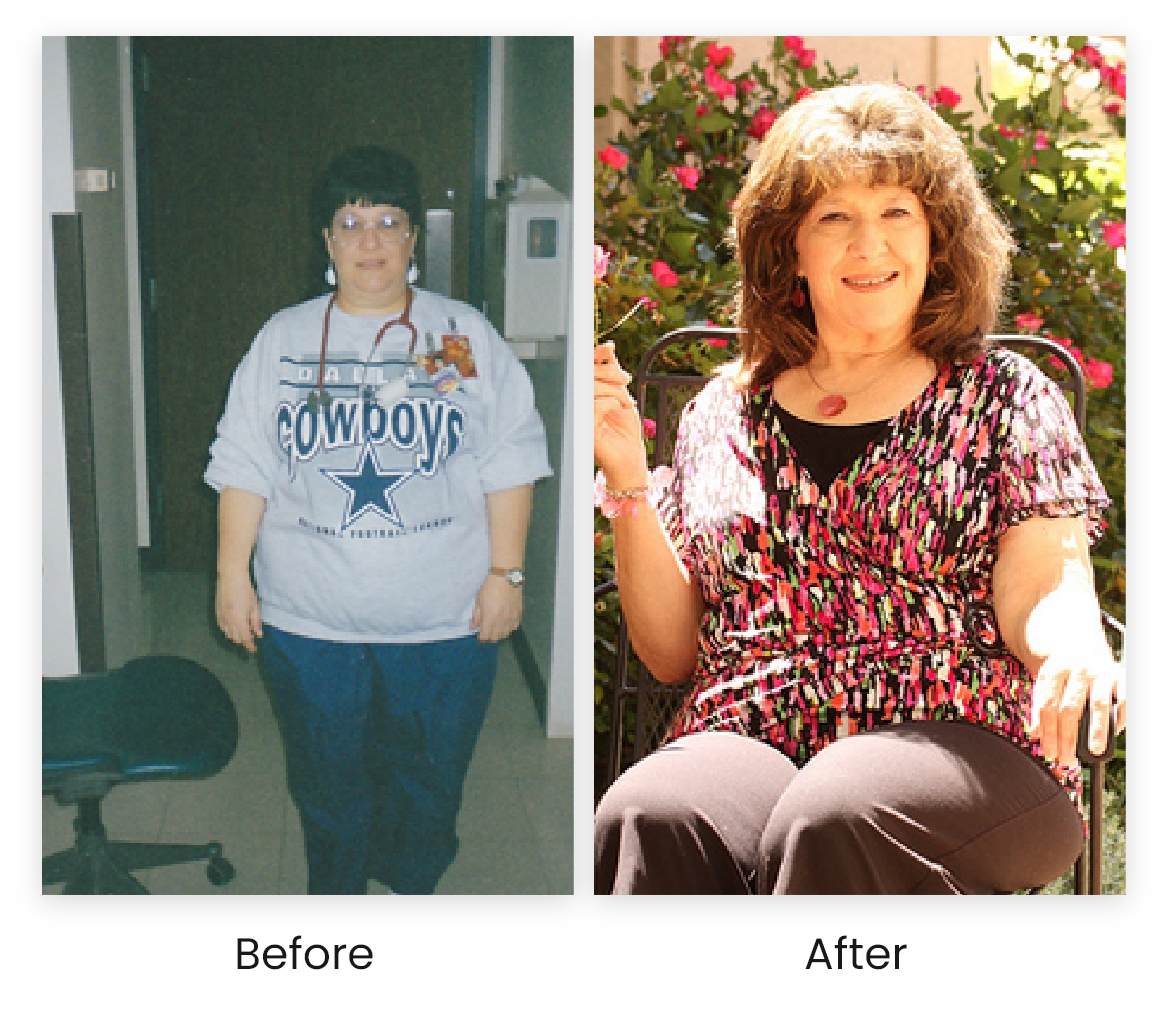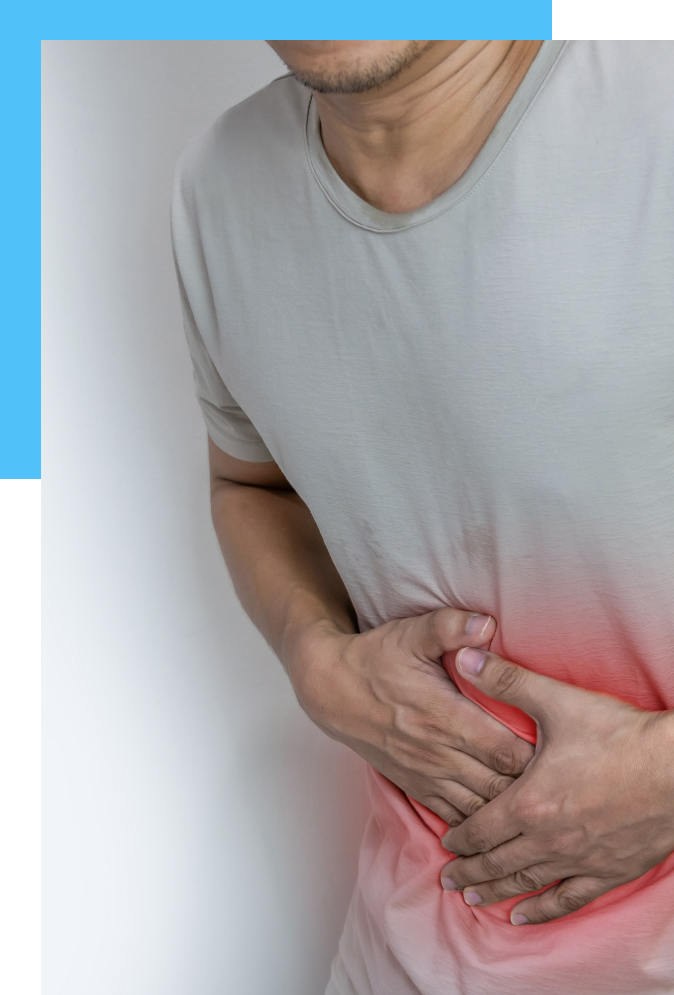Robotic Hernia Repairs
A hernia occurs when an organ, intestine, or fatty tissue protrudes through a weak spot or opening in the surrounding muscle or connective tissue. These hernias often manifest in the abdominal wall, sometimes becoming visible as an external bulge when straining or exerting pressure.

Hernia Types
- Inguinal: Occur in the inner groin region.
- Femoral: Develop in the upper thigh or outer groin.
- Incisional: Form through a previous surgical incision in the abdomen.
- Ventral: Arise in the general abdominal or ventral wall.
- Umbilical: Emerge at the belly button.

Causes
Hernias typically result from a combination of increased abdominal pressure and muscle or connective tissue weaknesses. Factors like obesity, heavy lifting, constipation, diarrhea, persistent coughing, or sneezing can contribute to hernia development. Muscle weakness may be present from birth or develop later in life, often influenced by factors like poor nutrition, smoking, diabetes, or overexertion.
Treatment
Hernia repairs are common, with over a million performed annually in the U.S. Most are inguinal hernia repairs, but various other hernia types also undergo treatment.

Hernia Severity
- Reducible: It’s like a bump that can go back inside your body easily, like pushing a button. Not too worrisome.
- Incarcerated: Imagine the bump gets stuck and can’t go back in. It might hurt, and you need to see a doctor.
- Incisional: Form through a previous surgical incision in the abdomen.
- Strangulated: This is the most serious. It’s when the bump is stuck and gets no blood flow. It’s an emergency and needs immediate medical help.
Surgery for a reducible hernia is favorable because it is planned for in a safe and sterile manner whereas strangulated hernias can present in an emergent unplanned setting.
Robotic Herina Repairs Before & After Gallery Images




Why Robotic Surgery?
- Minimally Invasive Approach:
Robotic hernia repair involves small incisions, significantly smaller than traditional surgery.
This means less pain, minimal scarring, and a faster recovery.
- Precision and Accuracy:
The robot-assisted platform offers incredibly precise movements and magnified 3D vision.
Your surgeon has enhanced control, ensuring a high level of accuracy during the procedure.
- Faster Recovery:
Due to the minimally invasive nature of robotic surgery, patients typically experience a shorter recovery period than open.
You can return to your daily activities sooner, with less time spent in the hospital.
- Reduced Risk of Infection:
Smaller incisions mean less exposure to potential contaminants, reducing the risk of infection.
This contributes to a smoother healing process and superior cosmetic outcome.
- Customized Care:
Robotic surgery is tailored to your specific needs.
Your surgeon can adapt the procedure to your unique anatomy, optimizing the repair for the best possible outcome.
- Lower Risk of Hernia Recurrence:
The use of surgical mesh during robotic hernia repair reinforces the weakened area, reducing the chances of the hernia coming back.
You can have more confidence in the long-term success of your surgery.
- Minimal Scarring:
Smaller incisions lead to minimal scarring, which is not only aesthetically pleasing but also less uncomfortable.
- Enhanced Safety:
Robotic surgery offers a high level of safety and precision, minimizing the risk of complications during the procedure.
- Expert Surgical Team:
You’ll be in the hands of skilled surgeons who are trained to use the robotic platform effectively.
Their expertise ensures the best possible surgical outcome.
- Improved Quality of Life:
Robotic hernia repair aims to alleviate the pain, discomfort, and limitations caused by your hernia, allowing you to enjoy a better quality of life sooner than traditional approaches.
Contact Us
We Look Forward to Meeting You
Austin
11851 Jollyville Road
Suite 104
Austin, TX 78759
South Austin
7201 Menchaca Rd
Ste B-1
South Austin, TX 78745
Cedar Park
500 W Whitestone Blvd
Suite 100A
Cedar Park, TX 78613
Instagram Feeds
Areas We Serve
Round Rock | Cedar Park | Pflugerville | Georgetown | San Marcos | Kyle | Leander | Buda | Taylor | Hutto | Elgin | Bastrop | Lockhart | Lakeway | Dripping Springs | Lago Vista | Manor | Wimberley | Liberty Hill | Smithville | Waco, TX | College Station, TX | Fredericksburg, TX | Temple, TX | Killeen, TX | Forthood, TX | Laredo, TX | Victoria, TX | New Braunfels, TX | Bryan, TX
© Copyrights 2024 NuSelf Bariatrics . All rights reserved.
 Book an Appointment
Book an Appointment




